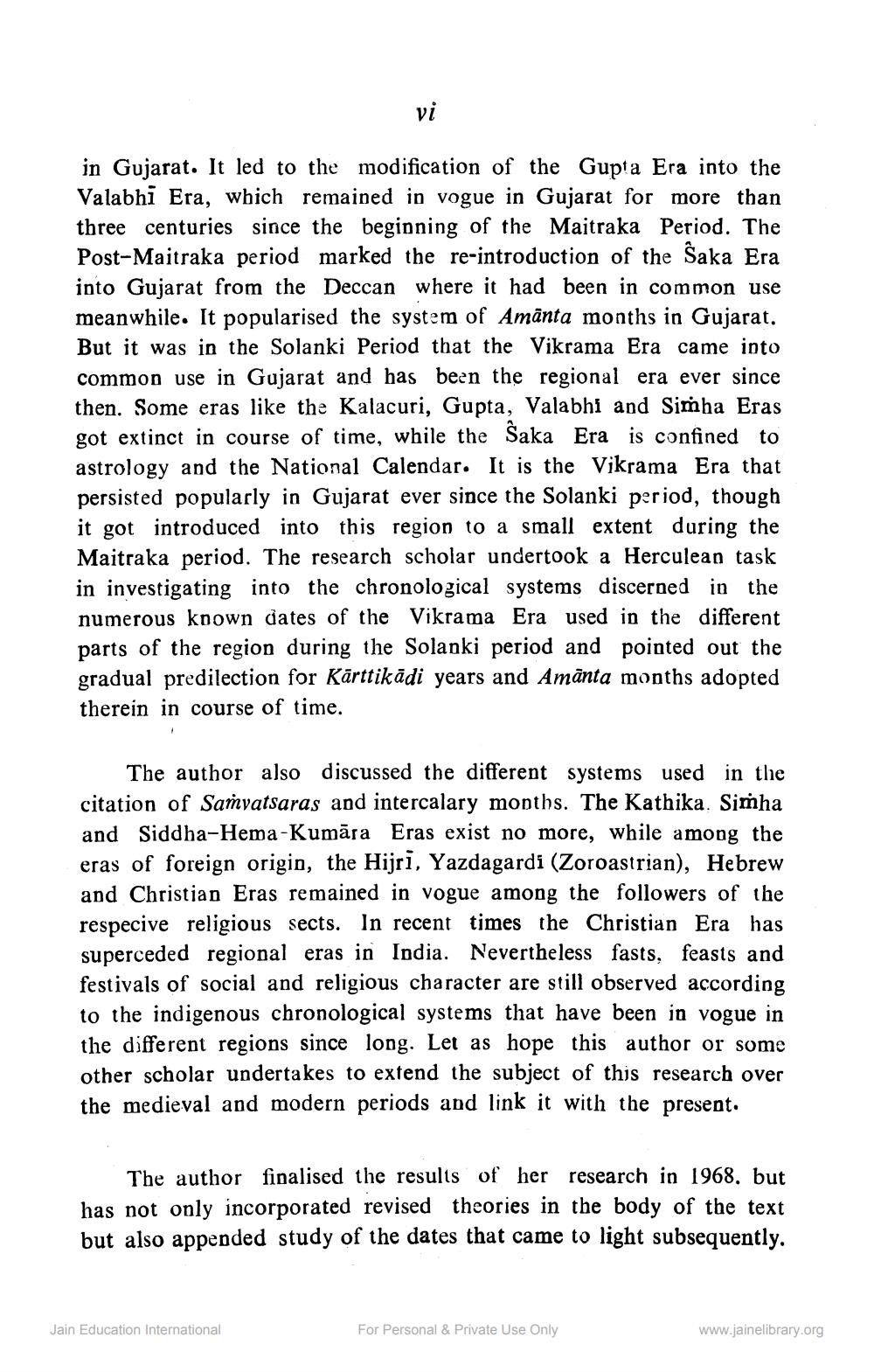Book Title: Chronological Systems of Gujarat Author(s): Bharati K Shelat Publisher: Pranav Shelat View full book textPage 7
________________ in Gujarat. It led to the modification of the Gupta Era into the Valabhi Era, which remained in vogue in Gujarat for more than three centuries since the beginning of the Maitraka Period. The Post-Maitraka period marked the re-introduction of the Ŝaka Era into Gujarat from the Deccan where it had been in common use meanwhile. It popularised the system of Amanta months in Gujarat. But it was in the Solanki Period that the Vikrama Era came into common use in Gujarat and has been the regional era ever since then. Some eras like the Kalacuri, Gupta, Valabhi and Simha Eras got extinct in course of time, while the Ŝaka Era is confined to astrology and the National Calendar. It is the Vikrama Era that persisted popularly in Gujarat ever since the Solanki period, though it got introduced into this region to a small extent during the Maitraka period. The research scholar undertook a Herculean task in investigating into the chronological systems discerned in the numerous known dates of the Vikrama Era used in the different parts of the region during the Solanki period and pointed out the gradual predilection for Kārttikādi years and Amanta months adopted therein in course of time. " vi The author also discussed the different systems used in the citation of Samvatsaras and intercalary months. The Kathika. Simha and Siddha-Hema-Kumāra Eras exist no more, while among the eras of foreign origin, the Hijri, Yazdagardi (Zoroastrian), Hebrew and Christian Eras remained in vogue among the followers of the respecive religious sects. In recent times the Christian Era has superceded regional eras in India. Nevertheless fasts, feasts and festivals of social and religious character are still observed according to the indigenous chronological systems that have been in vogue in the different regions since long. Let as hope this author or some other scholar undertakes to extend the subject of this research over the medieval and modern periods and link it with the present. The author finalised the results of her research in 1968. but has not only incorporated revised theories in the body of the text but also appended study of the dates that came to light subsequently. Jain Education International For Personal & Private Use Only www.jainelibrary.orgPage Navigation
1 ... 5 6 7 8 9 10 11 12 13 14 15 16 17 18 19 20 21 22 23 24 25 26 27 28 29 30 31 32 33 34 35 36 37 38 39 40 41 42 43 44 45 46 47 48 49 50 51 52 53 54 55 56 57 58 59 60 61 62 63 64 65 66 67 68 69 70 71 72 ... 422
